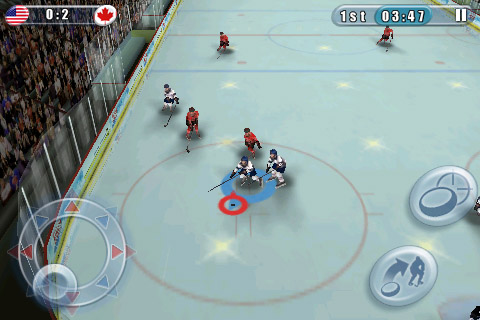The boards surrounding the ice help keep the puck in play and they can also be used as tools to play the puck. Players are permitted to "bodycheck" opponents into the boards as a means of stopping progress. The referees, linesmen and the outsides of the goal are "in play" and do not cause a stoppage of the game when the puck or players are influenced (by either bouncing or colliding) into them. Play can be stopped if the goal is knocked out of position. Play often proceeds for minutes without interruption. When play is stopped, it is restarted with a faceoff. Two players "face" each other and an official drops the puck to the ice, where the two players attempt to gain control of the puck. Markings on the ice indicate the locations for the "faceoff" and guide the positioning of players.
There are three major rules of play in ice hockey that limit the movement of the puck: offside, icing, and the puck going out of play. The puck goes "out of play" whenever it goes past the perimeter of the ice rink (onto the player benches, over the "glass", or onto the protective netting above the glass) and a stoppage of play is called by the officials using whistles. It also does not matter if the puck comes back onto the ice surface from those areas as the puck is considered dead once it leaves the perimeter of the rink.
Under IIHF rules, each team may carry a maximum of 20 players and two goaltenders on their roster. NHL rules restrict the total number of players per game to 18, plus two goaltenders. In the NHL, the players are usually divided into four lines of three forwards, and into three pairs of defenceman. On occasion, teams may elect to substitute an extra defenceman for a forward; this seventh defenceman might sometimes play on the fourth line as a forward.




